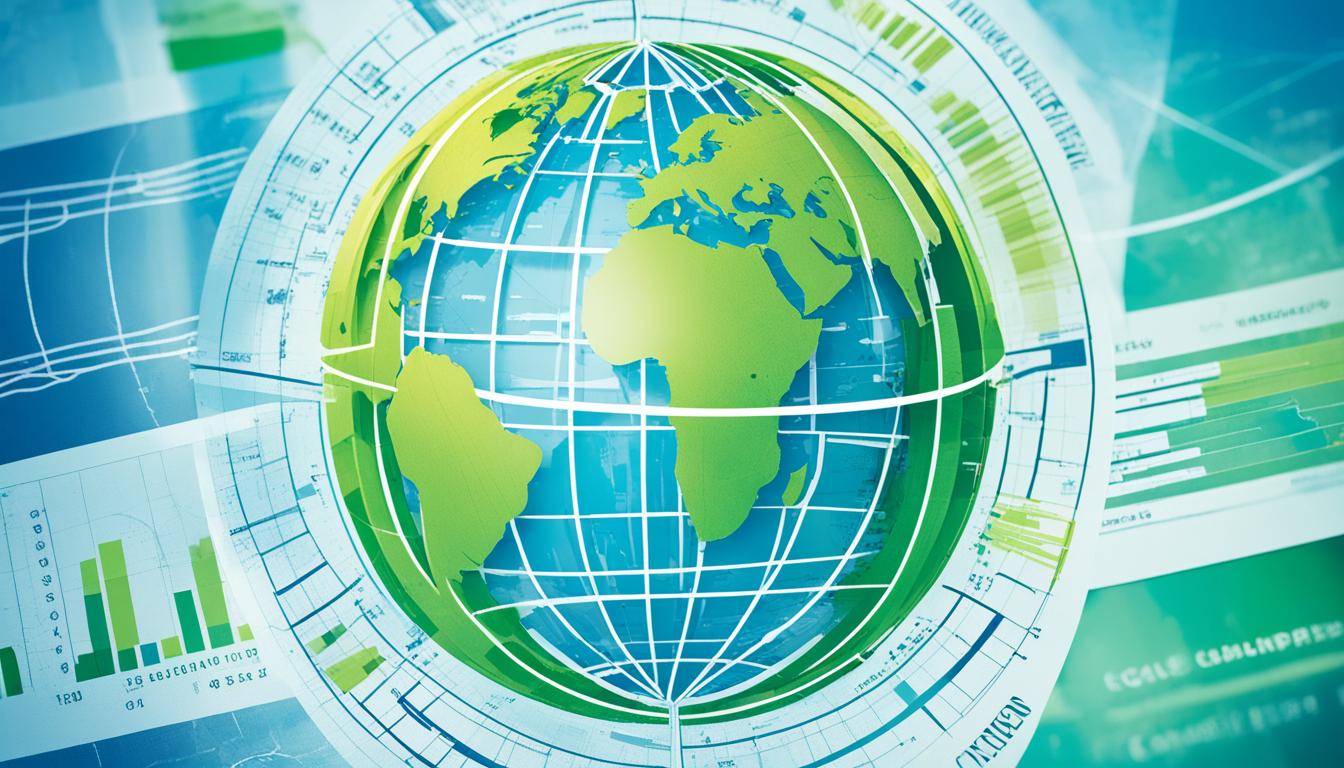Disclosure: This Post Contains Affiliate Links; We earn a commission on purchases.
International organizations play a crucial role in setting EMF (electromagnetic field) standards for the protection of public health and the environment. These standards help regulate exposure to electromagnetic radiation from various sources such as power lines, electrical devices, and wireless communication technologies.
The International Commission on Non-Ionizing Radiation Protection (ICNIRP), a non-governmental organization recognized by the World Health Organization (WHO), has developed guidelines for occupational and residential EMF exposure. These standards are based on extensive scientific research and evaluations of the biological effects of EMF.
EMF exposures below these recommended limits do not appear to have any known consequences on health. The WHO, through its International EMF Project, is working on harmonizing EMF standards worldwide and encouraging the development of exposure limits to ensure consistent protection for all individuals.
Key Takeaways:
- International organizations set EMF standards to protect public health and the environment.
- EMF standards regulate exposure to electromagnetic radiation from various sources.
- The International Commission on Non-Ionizing Radiation Protection (ICNIRP) provides evidence-based guidelines.
- The World Health Organization (WHO) works on harmonizing EMF standards globally.
- EMF exposures below recommended limits are considered safe for health.
International Organizations Involved in Setting EMF Standards
Various international organizations play a crucial role in setting EMF (electromagnetic field) standards to protect public health and safety. These organizations provide evidence-based guidance, recommendations, and regulations to ensure that EMF exposure is within safe limits. Let’s take a closer look at two key international organizations involved in this important work:
The International Commission on Non-Ionizing Radiation Protection (ICNIRP)
The International Commission on Non-Ionizing Radiation Protection (ICNIRP) is a renowned organization that focuses on the health and environmental effects of non-ionizing radiation, including EMF. It consists of independent experts who review scientific research and develop guidelines for safe exposure limits. By considering both short-term and long-term effects, ICNIRP standards help protect against potential harm from EMF. These guidelines are widely recognized and used internationally to regulate EMF exposure in various settings, including workplaces and residential areas.
The World Health Organization (WHO)
The World Health Organization (WHO) is actively engaged in the harmonization of EMF standards globally through its International EMF Project. WHO collaborates with member countries and international partners to develop guidelines that ensure consistent protection against potential health risks associated with EMF exposure. The project aims to provide a comprehensive framework for assessing and managing EMF exposure, taking into account the latest scientific evidence. By promoting global cooperation, the WHO helps set standards that prioritize the health and well-being of individuals worldwide.
Furthermore, it’s important to note that the European Union (EU) and national regulatory bodies in various countries also contribute to the development and implementation of EMF standards based on the guidelines provided by these international organizations. Together, these collaborative efforts facilitate the creation of comprehensive standards that address the potential risks while enabling the benefits of technology.
To better understand the involvement of international organizations in setting EMF standards, let’s consider the following table:
| Organization | Role |
|---|---|
| International Commission on Non-Ionizing Radiation Protection (ICNIRP) | Develop evidence-based guidelines for safe exposure limits |
| World Health Organization (WHO) | Harmonize EMF standards through the International EMF Project |
| European Union (EU) | Implement and enforce EMF standards in member countries |
| National Regulatory Bodies | Adopt and enforce EMF standards at the national level |
As we can see, international organizations like ICNIRP and WHO, along with regional and national entities, collaborate to establish EMF standards that protect individuals from potential hazards. Their expertise and commitment to research and regulation ensure that EMF exposure remains within safe limits, allowing us to benefit from modern technology while safeguarding our health.
The Importance of EMF Standards for Health and Safety
EMF (electromagnetic field) standards play a crucial role in safeguarding the health and safety of individuals. These standards are designed to regulate exposure to electromagnetic radiation from various sources such as power lines, electrical devices, and wireless communication technologies. By setting limits on EMF exposure, international organizations aim to mitigate the potential risks associated with prolonged and excessive electromagnetic radiation.
With the increasing use of technology in our daily lives, it is essential to understand and address the potential health effects of long-term EMF exposure. Scientific research is ongoing, and by establishing EMF standards, international organizations ensure that the public is protected from any known health consequences of electromagnetic radiation.
The development and implementation of EMF standards provide guidelines for individuals and organizations to follow, ensuring that exposure limits are not exceeded. By adhering to these standards, the health risks associated with electromagnetic radiation can be minimized, promoting a safer environment for everyone.
EMF standards are essential for promoting the health and safety of individuals by regulating exposure to electromagnetic radiation from various sources. By setting limits on EMF exposure, we can mitigate potential risks and protect public health.
Through research and evaluation, international organizations continuously update and refine EMF standards to keep pace with advancements in technology and emerging scientific findings. Monitoring compliance with these standards is crucial to ensure their effectiveness and the well-being of individuals.
It is important to note that EMF standards not only aim to protect human health but also take into account the potential impact on the environment. By incorporating environmental considerations into these standards, international organizations promote the preservation of ecosystems and biodiversity.
To illustrate the significance of EMF standards for health and safety, below is a comparative table outlining the recommended exposure limits set by different international organizations:
| International Organization | Recommended EMF Exposure Limit |
|---|---|
| International Commission on Non-Ionizing Radiation Protection (ICNIRP) | 1000 µT (microteslas) |
| World Health Organization (WHO) | 100 µT (microteslas) |
| European Union (EU) | 100 µT (microteslas) |
*Please note that these values are for illustrative purposes only and may vary. Always refer to the latest guidelines provided by the respective organizations for accurate and up-to-date information.
By adhering to established EMF standards, individuals and organizations can make informed decisions regarding the use of technology and minimize potential risks. It is important to stay informed about the latest guidelines issued by international organizations to ensure the health and safety of ourselves and those around us.
Global Regulations on EMF Exposure
Global regulations on EMF exposure vary across countries and regions, with each nation establishing its own standards based on international guidelines. The International Commission on Non-Ionizing Radiation Protection (ICNIRP) provides comprehensive guidance and recommendations for EMF exposure limits, which serve as a reference for many countries. However, disparities between national limits and international guidelines can lead to confusion among regulators, policymakers, and the general public.
Efforts are underway to harmonize these regulations through the International EMF Project, a collaborative initiative involving 54 participating countries and 8 international organizations. By working together, these entities seek to streamline and unify EMF exposure regulations, ensuring consistent protection for individuals around the world.
“The harmonization of EMF exposure: regulations is crucial for fostering clarity and facilitating effective management of electromagnetic radiation. By establishing a common framework, countries can enhance their control measures and promote public health and safety on a global scale.”

📝 Note: The image above illustrates the diverse regulatory landscape governing EMF exposure worldwide. It underscores the importance of harmonization efforts to streamline regulations and optimize protection for individuals.
Environmental Impact of EMF and International Standards
The environmental impact of electromagnetic fields (EMF) is a significant factor that international standards take into consideration. The effects of electromagnetic radiation are not limited to human health and safety but also encompass the natural environment, including wildlife and ecosystems. It is crucial for international organizations to establish exposure limits and control measures that protect both human wellbeing and the environment, striking a balance between technological advancements and ecological preservation.
By incorporating environmental considerations into EMF standards, international organizations ensure that the potential harm to ecosystems and biodiversity is minimized. These standards aim to control the impact of EMF on the natural environment to maintain the delicate equilibrium of our planet. Preserving the environment is essential for sustaining the Earth’s resources and safeguarding the future of all living organisms.
“The preservation of biodiversity and the natural habitats is a shared responsibility that should be upheld alongside technological progress.”
International standards for EMF strive to address the environmental impact of electromagnetic radiation while promoting advancements in technology. Through comprehensive assessments and research, these standards are designed to protect not only human lives but also the delicate balance of our planet’s ecosystems.
Potential Environmental Impacts of EMF
Electromagnetic radiation can affect the environment in various ways:
- Disruption of animal migration patterns
- Alteration of wildlife behavior
- Interference with reproductive and nesting habits of animals
- Impact on plant growth and development
- Effects on microorganisms and their ecosystems
The precise impact of EMF on the environment is still being studied, and scientific research continues to contribute to the understanding of this complex issue.
The Role of International Standards
International organizations play a vital role in establishing EMF standards that consider the environmental impact. These standards guide the development and implementation of policies and regulations at both the national and global levels. By promoting environmentally sustainable practices and effective control measures, international standards seek to protect the Earth’s ecosystems and ensure the long-term viability of our planet for future generations.
An Example of Environmental Considerations in International Standards
| Environmental Impact | International Standard |
|---|---|
| Disruption of marine life due to underwater EMF sources | International Electrotechnical Commission (IEC) Standard 60050-826 |
| Effects on avian species and nesting habitats | European Committee for Electrotechnical Standardization (CENELEC) EN 62233 |
| Protection of sensitive ecological areas from excessive EMF exposure | International Commission on Non-Ionizing Radiation Protection (ICNIRP) Guidelines |

Harmonization of EMF Standards by International Organizations
The harmonization of EMF standards is a vital endeavor undertaken by international organizations and participating countries to ensure global consistency in protecting individuals from the potential risks associated with electromagnetic field (EMF) exposure. International cooperation and collaboration enable the development of a unified framework for harmonizing EMF standards and guidelines worldwide.
Leading these efforts is the World Health Organization (WHO), through its International EMF Project. The WHO brings together countries and organizations to facilitate the establishment of harmonized EMF standards that prioritize the health and safety of individuals, irrespective of their geographic location.
By harmonizing EMF standards, international organizations aim to foster uniformity in exposure limits and control measures. This ensures that people across the globe receive the same level of protection from the potential health effects of EMF exposure.
Benefits of Harmonization
Harmonizing EMF standards offers numerous benefits, including:
- Consistent Protection: Harmonized standards ensure that individuals, regardless of where they live, are safeguarded against the potential risks of EMF exposure.
- Simplified Compliance: A unified framework simplifies compliance for manufacturers, service providers, and regulatory bodies, streamlining the implementation of EMF standards and guidelines.
- Enhanced Interoperability: Harmonization promotes interoperability between different technologies, enabling seamless communication and collaboration on a global scale.
- Facilitated Research and Development: A harmonized approach to EMF standards facilitates collaborative research and development efforts, fostering innovation while ensuring the protection of public health and safety.
Harmonization of EMF standards lays the foundation for a cohesive global response to the challenges posed by electromagnetic field exposure. It allows for the development of comprehensive guidelines that protect individuals and the environment, paving the way for a safer and sustainable future.
Efforts to harmonize EMF standards by international organizations continue to shape the landscape of EMF regulation. By prioritizing collaboration and global consensus, these organizations strive to ensure that individuals worldwide are protected from the potential risks associated with EMF exposure.
Compliance and Implementation of EMF Standards
Ensuring compliance with and effective implementation of EMF standards is vital for safeguarding public health and safety. National regulatory bodies bear the responsibility of enforcing and monitoring adherence to established EMF standards within their respective countries. This involves conducting rigorous inspections and assessing EMF levels across various settings to ascertain compliance.
When non-compliant entities are identified, necessary enforcement actions must be taken to rectify the situation. Such actions may include issuing warnings, imposing fines, or even revoking licenses or permits. By holding organizations accountable for meeting EMF standards, regulatory bodies play a crucial role in mitigating potential risks and protecting individuals from excessive electromagnetic field exposure.
International organizations also contribute to the overall compliance and implementation efforts. The International EMF Project, for instance, provides guidance, support, and best practices to countries in implementing and enforcing EMF standards. By fostering collaboration and knowledge sharing, these organizations promote a coordinated global response to EMF regulation, ensuring consistent protection across borders.
Effective implementation of EMF standards involves active cooperation between stakeholders, including government agencies, industry players, and the public. By working together, these entities can develop practical strategies, share resources, and educate the public about the importance of compliance with established EMF standards.
“Compliance with EMF standards is paramount to achieving the desired level of protection against potential health risks associated with electromagnetic field exposure.”
The image above highlights the significance of compliance and implementation in ensuring a safe and healthy environment for all.
Conclusion
International organizations, such as the International Commission on Non-Ionizing Radiation Protection (ICNIRP) and the World Health Organization (WHO), play a critical role in setting EMF standards to protect public health and the environment. These organizations collaborate and harmonize efforts to establish consistent guidelines for EMF exposure limits and control measures globally. Compliance and implementation of these standards are vital to ensure their effectiveness in safeguarding individuals from the potential risks of EMF exposure.
The ongoing research and evaluation of the biological effects of EMF will continue to inform and shape the development of international EMF standards. By prioritizing the health and safety of individuals, international organizations are working towards minimizing the potential risks associated with EMF exposure in our increasingly digital world. These efforts aim to strike a balance between technological advancements and the preservation of ecosystems and biodiversity, recognizing the importance of environmental considerations in setting international standards.
In summary, international organizations’ dedication to protecting public health and the environment through the establishment of EMF standards is of utmost importance. By fostering collaboration, harmonization, and ongoing research, these organizations aim to ensure consistent guidelines for EMF exposure limits worldwide. Compliance and implementation of these standards are crucial to enforce their effectiveness and guarantee the health and safety of individuals in our rapidly evolving digital landscape.
Source Links
- https://www.who.int/teams/environment-climate-change-and-health/radiation-and-health/protection-norms
- https://www.who.int/news-room/questions-and-answers/item/radiation-electromagnetic-fields
- https://www.rivm.nl/sites/default/files/2018-11/Comparison of international policies on electromagnetic fields 2018.pdf

Subscribe to Our Newsletter










